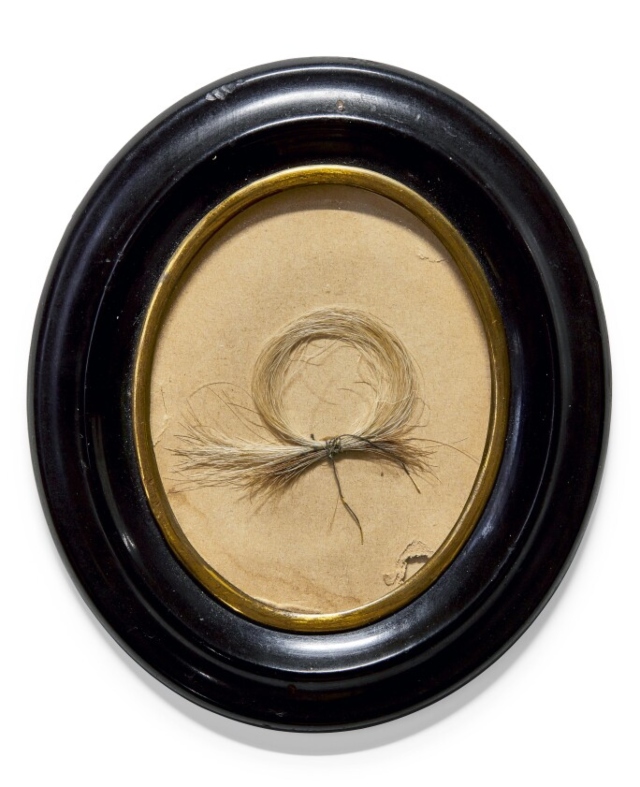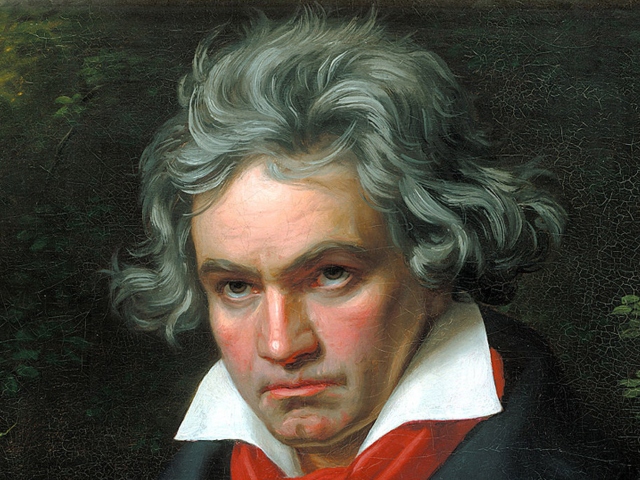
-
Study Of Beethoven’s Hair Reveals Family Secret
29 Mar 2023 by Heinrich in Celebrities, Entertainment, Tech/Sci, Video
[imagesource:flickr]
Before Beethoven died in 1827, he wished for his medical problems to be studied after his passing in what the composer wished “the world will be reconciled to me after my death.”
Nearly 200 years after his death, researchers have honoured his dying request by analysing DNA from preserved locks of his hair and, sequencing the composer’s genome for the first time.
“Our primary goal was to shed light on Beethoven’s health problems, which famously include progressive hearing loss, beginning in his mid- to late-20s and eventually leading to him being functionally deaf by 1818.”
Researchers from the Max Planck Institute for Evolutionary Anthropology in Leipzig, Germany, have now completed the task and the results have been published in Current Biology.
Beethoven died at the age of 56, and scientists had hoped that five hair samples the composer left behind may shed some light on his chronic health problems as well as what contributed to his death. It is widely known that Beethoven was deaf at the time of his passing, but the composer also suffered from severe liver disease, as well as ongoing gastrointestinal issues.
In 1802, Beethoven wrote to his brothers and requested that his health issues be made public by his doctor, Johann Adam Schmidt.
The letter became known as the Heiligenstadt Testament, but unfortunately for the doctor, Beethoven outlived the physician, and the note was only found some years later, hidden inside a secret compartment of Schmidt’s desk.

Image: Sotheby’s
The letter details Beethoven’s growing hopelessness with his hearing loss, and how his work was the only thing keeping him from taking his own life. Beethoven wrote that “he didn’t want to leave before he had produced all the works that he felt the urge to compose”:
Within the last seven years of his life, the composer experienced at least two attacks of jaundice, which is associated with liver disease, leading to the general belief that he died from cirrhosis.
There has never been clarity on exactly what caused Beethoven’s death but with modern sequencing technology the answers are easily accessible within his DNA.
Beethoven’s body was exhumed twice in 1863 and 1888, but despite combing through his physician’s notes and autopsy results, this is the first time that scientists can accurately access the reasons for his death. The hair samples used were cut from his head in the seven years leading up to his death.
Beethoven had hand delivered one of the locks himself to the pianist Anton Halm in April 1826, saying “Das sind meine Haare!” (“That is my hair!”)
Although the scientists were unable to find a cause for his gastrointestinal issues as well as the cause of his hearing loss, they did however reveal that Beethoven suffered from genetic risk factors for liver disease as well as showing signs of a Hepatitis B illness in the months before his death. These factors were found to have contributed to his death.
Beethoven’s genetic data also helped the researchers rule out other potential causes of his ailments, such as celiac disease, an autoimmune condition, lactose intolerance or irritable bowel syndrome.
Beethoven was also fond of his alcohol and was rumoured to drink at least a litre of wine with his lunch, causing the researchers to speculate that his ‘excessive drinking habits’ in combination with his genetic risk for a liver disease most likely contributed to his demise.
Researchers also sampled his DNA to compare with living relatives, but in a strange twist, no complete matches could be made to anyone. According to scientists looking for a shared paternal ancestor through Beethoven’s family in the late 1500s and early 1600s, there was no match for the Y-chromosome.
What this indicates is a possible extra-marital affair on his father’s side that resulted in a child.
The researchers think the affair occurred sometime between the 1572 conception of Hendrik van Beethoven, an ancestor in the paternal Beethoven line seven generations removed from the composer, and the conception of Beethoven in 1770.
This just goes to prove that every family has their secrets. Even the family of arguably the best composer of all time.
Cue Moonlight Sonata.
[source:cnn]
Latest News
-
Thai Woman Sentenced To Death For Murdering 14 Friends With Cyanide In Shocking Killing Spree
[imagesource: Sararat Rangsiwuthaporn] A woman in Thailand, dubbed 'Am Cyanide' by Thai...
-
René Magritte Painting Sells For Record R2.1 Billion At Auction
[imagesource:renemagritte.org] A René Magritte painting portraying an eerily lighted s...
-
Brave Rape Survivor Alison Botha Faces New Challenge After Brain Surgery
[imagesource: Alison Botha] Gqeberha rape survivor Alison Botha, a beacon of resilience...
-
Get Ready For The Mother of All Celebrations As MCQP Turns 30
[imagesource:mcqp/facebook] Clutch your pearls for South Africa’s favourite LGBTQIA+ ce...
-
The Iconic Good Hope Centre Is Set For Redevelopment
[imagesource:capetown.gov] The City of Cape Town’s Mayoral Committee has approved the...
-






























